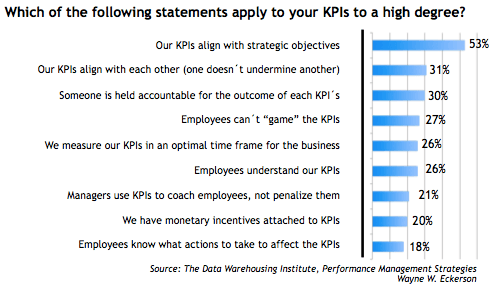
Using Key Performance Indicators – KPIs – To Connect the Dots in Your Marketing Operation
“The Numbers Never Lie.” Never has this adage been more relevant than in today’s marketing space. Metrics, ROI and deliverables are just as important as a well-developed media plan or a razor-sharp content strategy. When we discuss metrics and deliverables, it is essential that the marketing operation lays out clear Key Performance Indicators (KPIs). The KPI setting process is critical to setting the framework for the upcoming marketing year and it should be the thread that connects marketing performance to the other key stakeholders in the operation. By analysing your performance against the defined KPIs you can easily assess what is and isn’t working and adjust your activation plans accordingly.
However, all too frequently here at Flock, we see that KPIs are not connected to the overarching corporate goals, the KPIs are not aligned across the departments and the tracking and measurement tools are not in place. Where there are KPIs, there are too many of them and not enough focus on the core three to five which actually drive business and galvanise the teams.
So, if we look into building the right KPIs and discuss how they will serve to support the overall operation, we should start by identifying important characteristics which should be present. These should be:
- Measurable
- Detail a specific action or result
- Have a specific time frame (i.e. one quarter or the entire year)
- Answer the “How” questions, such as ‘How much?’ ‘How many? ‘How will I know if the action has been accomplished?’
Whilst there is no prescribed total for the number of KPIs, we suggest no fewer than three and no more than five.
Sharing KPIs with Key Stakeholders
Constructing clear, concise and measurable KPIs for marketing is just the first step. Integrating the targets with your key stakeholders is key. The sharing of KPIs fosters collaboration, communication and ensures that all parties have their respective “skin in the game.”
Below are some practical example of how KPIs can be effectively shared throughout an organisation:
Procurement- Your procurement team is an invaluable asset to, among other things, define parameters, manage process and lead critical negotiations. Some potential shared targets can include an agency pitch or review, creating a specific dashboard or managing a budget or savings goal.
Media- The media team is at the flashpoint to ensure that all of the great research, great plans and great creative comes to life for the consumer in the marketplace. We have observed successful shared KPIs around added value generation by third party media companies, innovation/media creativity around a specific campaign, content sharing or “earned media” goals.
External Agency- Your agency fees are typically the largest line item in your non-working marketing budget, so make sure that your agencies are working as hard as they can for you. A shared KPI with your agency can be built around any of your specific brand or company cost per lead, cost per acquisition or sales results. Once aligned with the agency,the KPI can be built into the agency’s overall performance-related compensation.
So what?
The beauty of clear, agreed and communicated KPIs is alignment within an organisation. It means clear goals are visible and ensures all people are working in a way which complements each other, and ultimately the business. It avoids hostilities between different departments, and can help eliminate in-fighting which uses up valuable resources. What is key for this to be a fully workable and continuous improvement model is the measurement of the KPIs. They need to be not only measurable in principle but clear on how they are measured, and the action that are taken away from the findings.
Have you got the right KPIs in place? Do you need help with aligning your KPIs across departments?
If so, Flock would be happy to help and transform your KPIs transparent to create future performance and add value to your marketing ecosystem, get in touch here


